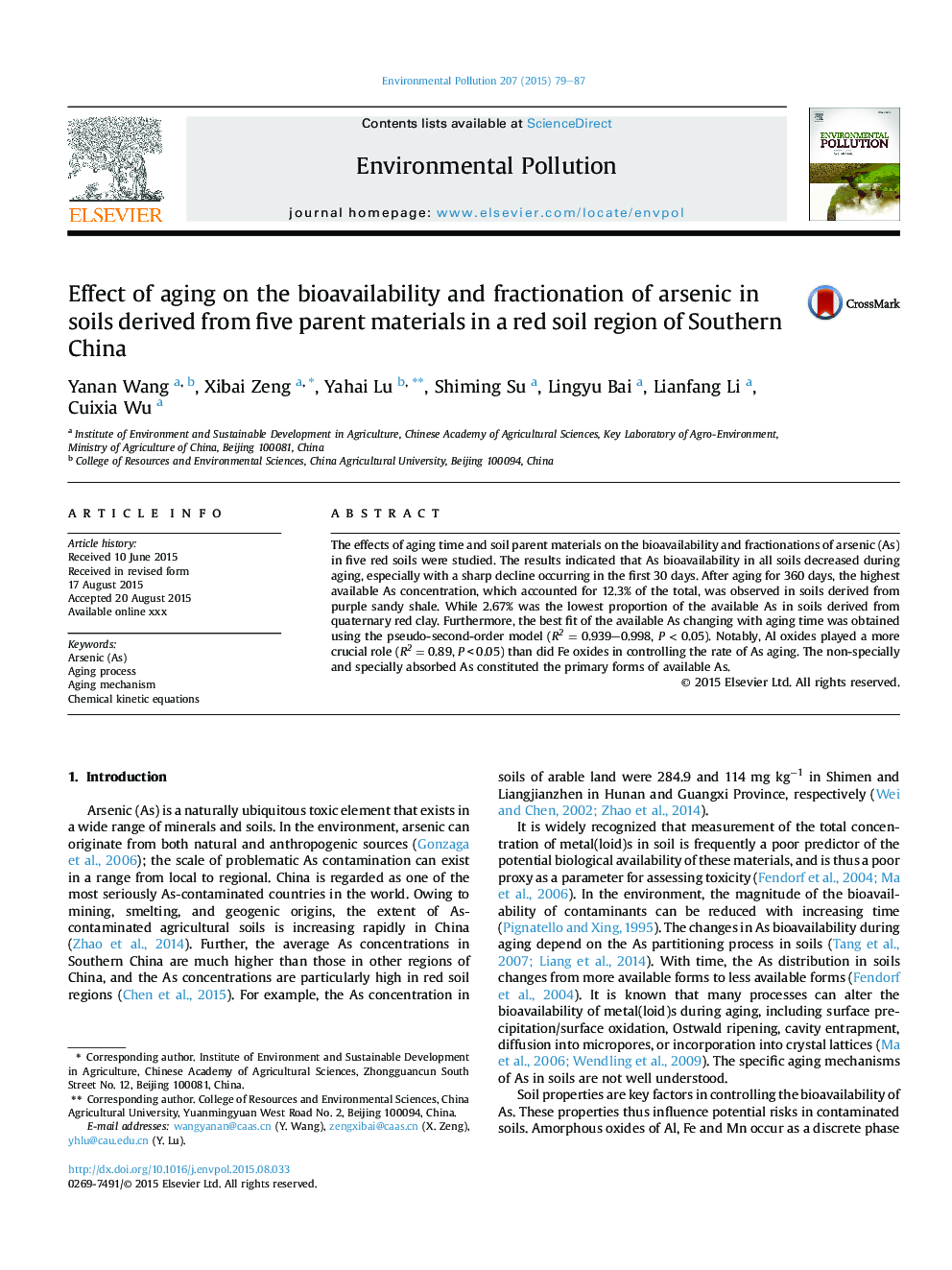| Article ID | Journal | Published Year | Pages | File Type |
|---|---|---|---|---|
| 6316131 | Environmental Pollution | 2015 | 9 Pages |
Abstract
The effects of aging time and soil parent materials on the bioavailability and fractionations of arsenic (As) in five red soils were studied. The results indicated that As bioavailability in all soils decreased during aging, especially with a sharp decline occurring in the first 30 days. After aging for 360 days, the highest available As concentration, which accounted for 12.3% of the total, was observed in soils derived from purple sandy shale. While 2.67% was the lowest proportion of the available As in soils derived from quaternary red clay. Furthermore, the best fit of the available As changing with aging time was obtained using the pseudo-second-order model (R2Â =Â 0.939-0.998, PÂ <Â 0.05). Notably, Al oxides played a more crucial role (R2Â =Â 0.89, Pï¼0.05) than did Fe oxides in controlling the rate of As aging. The non-specially and specially absorbed As constituted the primary forms of available As.
Related Topics
Life Sciences
Environmental Science
Environmental Chemistry
Authors
Yanan Wang, Xibai Zeng, Yahai Lu, Shiming Su, Lingyu Bai, Lianfang Li, Cuixia Wu,
